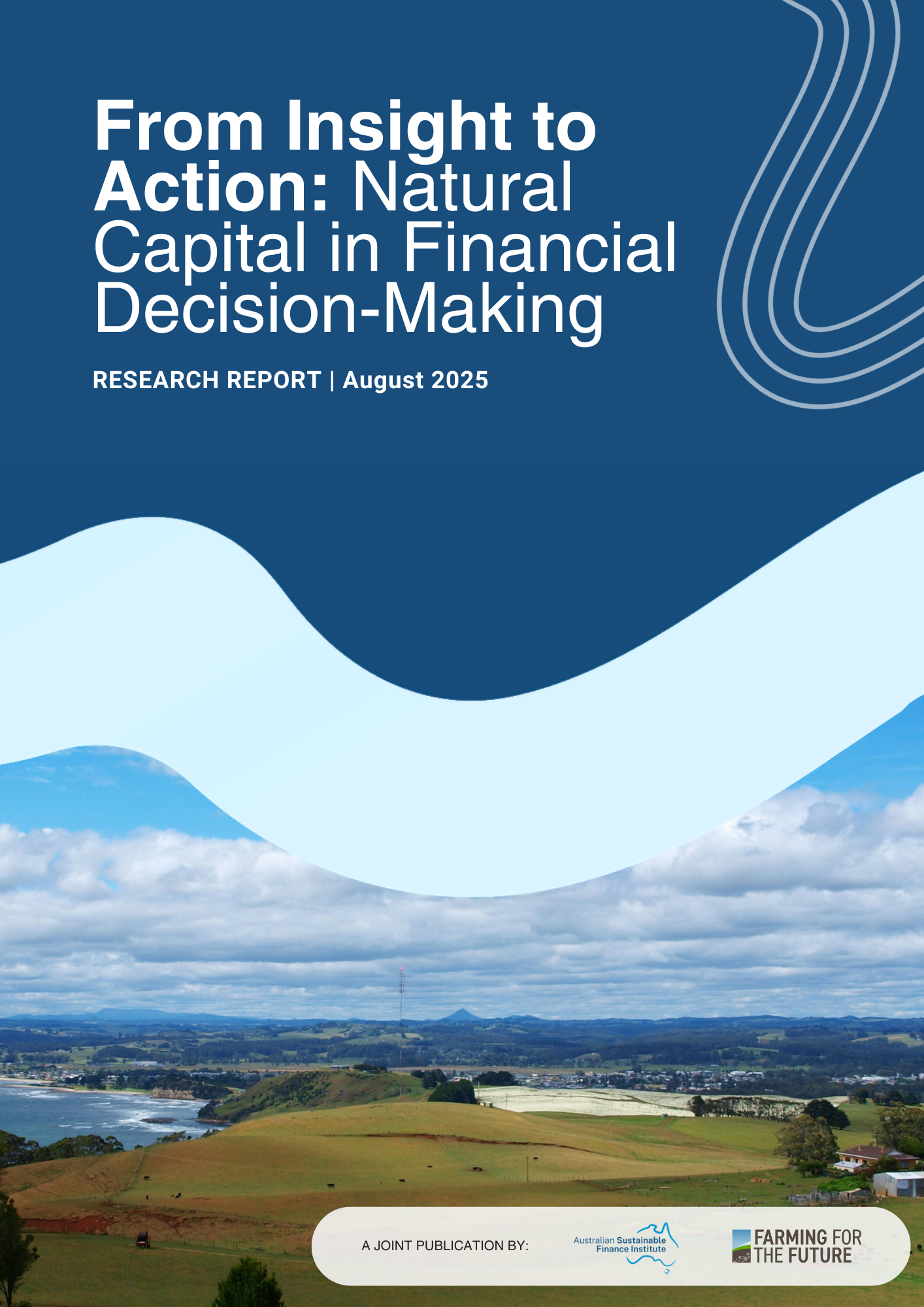
There is growing recognition of the dependence and impacts of economic activity and productivity on our natural environment, including biodiversity and natural ecosystems.
ASFI’s Work on Nature
On this page
ASFI’s Sustainable Finance Action Plan (2025-27) recognises the importance of natural capital to a resilient and sustainable economy and makes several recommendations that will enable the finance sector to recognise, value and incorporate natural capital into capital allocation decisions and risk analysis.
ASFI’s Valuing Natural Capital program
The Valuing Natural Capital (VNC) program was a two-year cross-sector partnership (July 2023 – July 2025) that brought together stakeholders from finance, agriculture, science, and government to accelerate the integration of nature considerations into Australia’s financial system.
Delivered in collaboration with Macdoch Foundation’s Farming for the Future initiative, the program focused on exploring practical methods to recognise and incorporate the value of nature, in financial decision-making.
The VNC program supported financial institutions in better understanding how changes in nature condition influence financial outcomes such as productivity, profitability, and risk exposure in agricultural businesses.
Through the establishment of ASFI’s Natural Capital Advisory Group (NCAG), the program provided a key platform for building consensus on the ambitions, needs, and priorities for integrating nature considerations into financial decision-making. It also helped identify critical barriers and enablers to integration and contributed to shaping a practical pathway for continued progress.
By fostering cross-sector alignment and shared understanding, the program laid important groundwork for advancing a more resilient, productive, and sustainable land sector.
Valuing Natural Capital Publications
In June 2024, ASFI and Macdoch Foundation’s Farming for the Future initiative released insights from our ‘Valuing Natural Capital’ program of work.
How Financial Institutions are Approaching Nature
In June 2024, we released initial insights from the VNC program. Drawing on interviews with members of the NCAG, the report highlights:
A growing interest in natural capital, though progress remains slow due to nascent understanding, lack of clear definitions, evolving standards, and competing sustainability priorities.
The essential role of the entire value chain in driving adoption of sustainable nature management practices.
The importance of Government leadership in enabling investment in nature and sustainable land management.
These insights continue to inform and support our efforts to advance the integration of natural capital considerations into decision-making across the finance sector.
Natural Capital in Financial Decision-making
This research report from ASFI as part of the VNC program, released in August 2025, was developed with Farming for Future and informed by collaborative engagement with the NCAG.
The report shares the final insights from the VNC program, confirming the growing recognition of natural capital’s importance in managing both financial and environmental risks, particularly those related to climate change, productivity, and resilience.
The research also highlights key barriers to progress, and outlines a proposed way forward to embed natural capital into mainstream financial decision-making.
The report identifies four strategic priorities and associated actions:
Support landholders to invest in natural capital through practical taxonomy application and finance solutions.
Make the value of natural capital visible: Support integration of natural capital factors into land and asset valuations.
Scale natural capital integration: Strengthen data infrastructure and capability.
Assess if and how integration of natural capital into financial risk management systems adds material value.
These insights and recommendations will guide and shape the next phase of our work to further advance the integration of nature into financial decision-making.
Other Nature-Related Publications
















